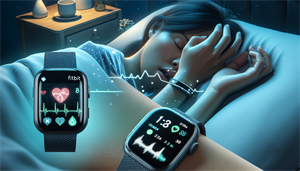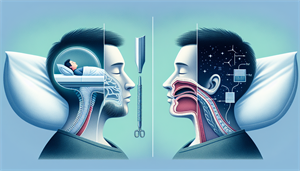
What Does Sleep Apnea Look Like on Fitbit?
Sleep apnea is a significant sleep disorder that can lead to serious health complications if not detected and managed timely. As technology advances, wearable tech devices like Fitbit have become increasingly popular for monitoring various health indicators, including signs of sleep apnea. In this article, we will explore the question, “what does sleep apnea look like on Fitbit?” Let’s delve into the world of sleep apnea and Fitbit’s capabilities in detecting its signs.
Key Takeaways
Fitbit devices can aid in sleep apnea detection by tracking sleep stages, oxygen saturation, and detecting snoring, although they are not FDA-approved for diagnosing the condition. Devices such as the Fitbit Sense, Versa series, and Charge series offer various sleep tracking features, but with different capabilities; for example, the Sense includes snore detection, while the Charge series lacks a microphone. Fitbit data can be valuable for managing sleep apnea by sharing it with healthcare providers, tracking progress over time, and making lifestyle adjustments, but this should complement rather than replace medical advice and treatment.
Identifying Sleep Apnea Signs on Fitbit
Sleep apnea, particularly obstructive sleep apnea, is characterized by interrupted breathing, multiple nightly wake-ups, and lack of restful sleep. Identifying these symptoms is significant because they can lead to serious health complications such as high blood pressure, stroke, and cardiovascular disease. Although Fitbit devices are not officially approved for diagnosing sleep apnea, they can aid in recognizing potential symptoms by tracking sleep patterns and quality.
Interrupted Breathing
Fitbit devices, such as the Fitbit Sense, detect interrupted breathing by monitoring an individual’s oxygen levels during the night and identifying instances when blood oxygen saturation levels fluctuate. While these devices are not recognized as an approved sleep apnea test by the FDA, they can offer insights into sleep patterns that could potentially identify sleep apnea.
Multiple Nightly Wake-Ups
Another significant sign of sleep apnea is multiple nightly wake-ups. Fitbit identifies these wake-ups by monitoring heart rate variability (HRV) and tracking the time spent awake or restless during sleep. There is a correlation between sleep apnea and nighttime awakenings, making sleep data essential in the potential to diagnose sleep apnea through a sleep study that monitors the patient throughout the night.
Lack of Restful Sleep
A lack of restful sleep, characterized by sleep disorder symptoms such as: being a restless sleeper, affecting sleep quality inadequate REM sleep alterations in deep sleep breathing experiencing irritability or crankiness can also be indicative of sleep apnea. Fitbit defines restful sleep based on heart rate, the duration of wakefulness or restlessness, and the various sleep stages, which can assist in identifying such signs.
Fitbit's Role in Sleep Apnea Detection and Monitoring
Fitbit devices significantly contribute to sleep apnea detection and monitoring by measuring heart rate, tracking oxygen saturation, and detecting snoring. Fitbit devices, by tracking heart rate variability and heart rate throughout sleep, can help in recognizing sleep apnea by noticing changes that might suggest breathing disruptions during sleep.
Heart Rate Monitoring
Fitbit devices estimate the heart rate during sleep by analyzing data from both awake and asleep periods. It utilizes a combination of movement and heart rate metrics to assist in identifying sleep patterns and estimating sleep stages. Studies indicate that there is a strong connection between sleep apnea and heart rate for many individuals. Variations or irregularities in heart rate during sleep could potentially signal the existence of sleep apnea.
Oxygen Saturation Tracking
Fitbit devices, such as the Fitbit Sense, monitor oxygen saturation levels during sleep, which can help in identifying potential signs of sleep apnea. Fluctuations in blood oxygen levels can indicate breathing disruptions, which are common symptoms of sleep apnea. While Fitbit devices are not a substitute for professional medical diagnosis, they can provide valuable data for individuals to share with their healthcare providers for further evaluation and treatment.


